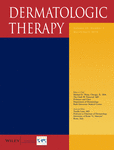Treatment of dystrophic epidermolysis bullosa with bone marrow non-hematopoeitic stem cells: a randomized controlled trial
Conflict of interest: None
ABSTRACT
Patients with dystrophic epidermolysis bullosa (DEB) have mutations in type VII collagen gene. Type VII collagen is synthesized by keratinocytes and fibroblasts. Based on the ability of bone marrow non-hematopoeitic stem cells (NHBMSC) to develop into fibroblasts, we decided to investigate the use of NHBMSC in the treatment of recessive DEB (RDEB). This study included fourteen patients with RDEB; the first seven of them were given cyclosporine after the infusion of NHBMSC. As cyclosporine has been used for the treatment of RDEB we decided not to use cyclosporine for the second group of seven patients. Skin biopsies from the lesions were studied by electron microscopy before and after treatment. The number of new blisters decreased significantly after treatment in both groups (p = 0.003 and 0.004 respectively) and the rate of healing of new blisters became significantly faster after treatment in both groups (p < 0.001) with no significant difference between the two groups. Electron microscopic examination revealed increased number of anchoring fibrils after treatment in both groups. No major side effects were reported during the 1-year follow-up period. Our findings highlight the efficacy as well as the safety of NHBMSC in the treatment of RDEB.




